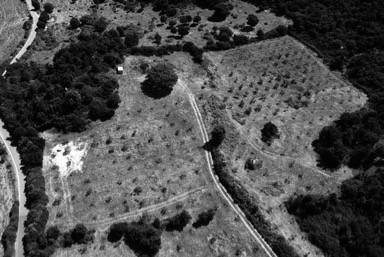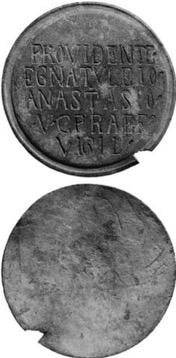Bronze disc with Late Roman Age inscription (Siddai)
A bronze disc, a kind of plate (dimensions: diam. 11.29 cm; thickness 2.9 cm; weight 345.5 g.) was discovered fortuitously at the archaeological site of Siddai 'e Susu, in the Dorgali area (fig. 1) made with the casting mould technique.

(from DELUSSU, IBBA 2012, fig. 1, p. 2196).
An almost complete Latin inscription is on the front of this metal plate, in which the prefect of Rome’s vigiles Egnatuleius Anastasius is mentioned with the title of vir clarissimus, while the rear, devoid of text, shows defects resulting from its manufacture (figs. 2, 3).

Every single word of the text, engraved with regular and elegant letters, is separated by a full stop and seven stylized ivy leaves, roughly oval in shape (Fig. 4).

Based on a series of clues deduced from the text, the disc’s year of manufacture should fall within the time period ranging between 326 and 337 A.D., which corresponds to the period of time when the prefect of alleged African origin, who commissioned it, was in office. It is therefore highly probable that the inscription which recalls the prefect of the vigiles was engraved on a bronze disc walled-in on a building which is now destroyed. The artefact is on display in the Archaeological Museum of Dorgali.
Bibliografia
- DELUSSU F., IBBA A., Egnatuleius Anastasius: un nuovo praefectum vigilum da Dorgali, in L’Africa Romana. Trasformazione dei paesaggi del potere nell’Africa settentrionale fino alla fine del mondo antico, Atti del XIX Convegno di Studio, Sassari 16-19 dicembre 2010, II, Roma 2012, pp. 2195-2210.

 VR
VR